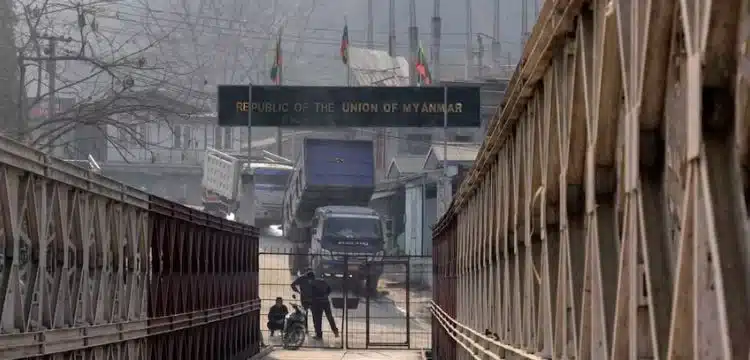[vc_row][vc_column][vc_column_text dp_text_size=”size-4″]
The Indian government has officially announced the termination of the Free Movement Regime (FMR) with Myanmar, signaling the implementation of a border fence. Union Minister Amit Shah confirmed this decision on Saturday, emphasizing the need for enhanced security along the porous India-Myanmar border. The move is likened to the existing fencing along the Bangladesh border.
The extensive India-Myanmar border, stretching 1,643 km across Northeastern states like Manipur, Mizoram, Nagaland, and Arunachal Pradesh, is currently only fenced along 10 km in Manipur. Initially, both countries allowed significant freedom of movement for their citizens. However, the 2018 Free Movement Regime (FMR) agreement with Myanmar permitted tribes residing along the border on both sides to travel up to 16 km inside the other country without a visa, staying for up to two weeks.
Read more : Modi Inaugurates Ayodhya Ram temple, Replacing Historic Babri Mosque
With the termination of the FMR and the proposed border fencing, individuals entering India from Myanmar will be required to obtain a visa, introducing bureaucratic hurdles. This decision is driven by various factors, including concerns about an influx of illegal immigrants, drug and gold smuggling, and the potential misuse of the visa-free regime by insurgent groups.
The decision gained urgency due to last year’s conflict in Manipur, which raised concerns about “uncontrolled illegal immigration” from Myanmar, contributing to regional instability. Although the government has not disclosed a specific timeframe or the cost of the proposed fencing, plans in this regard were outlined last year. The move signifies India’s commitment to fortifying its borders, addressing security concerns, and regulating cross-border movement to mitigate various threats.
[/vc_column_text][/vc_column][/vc_row]











